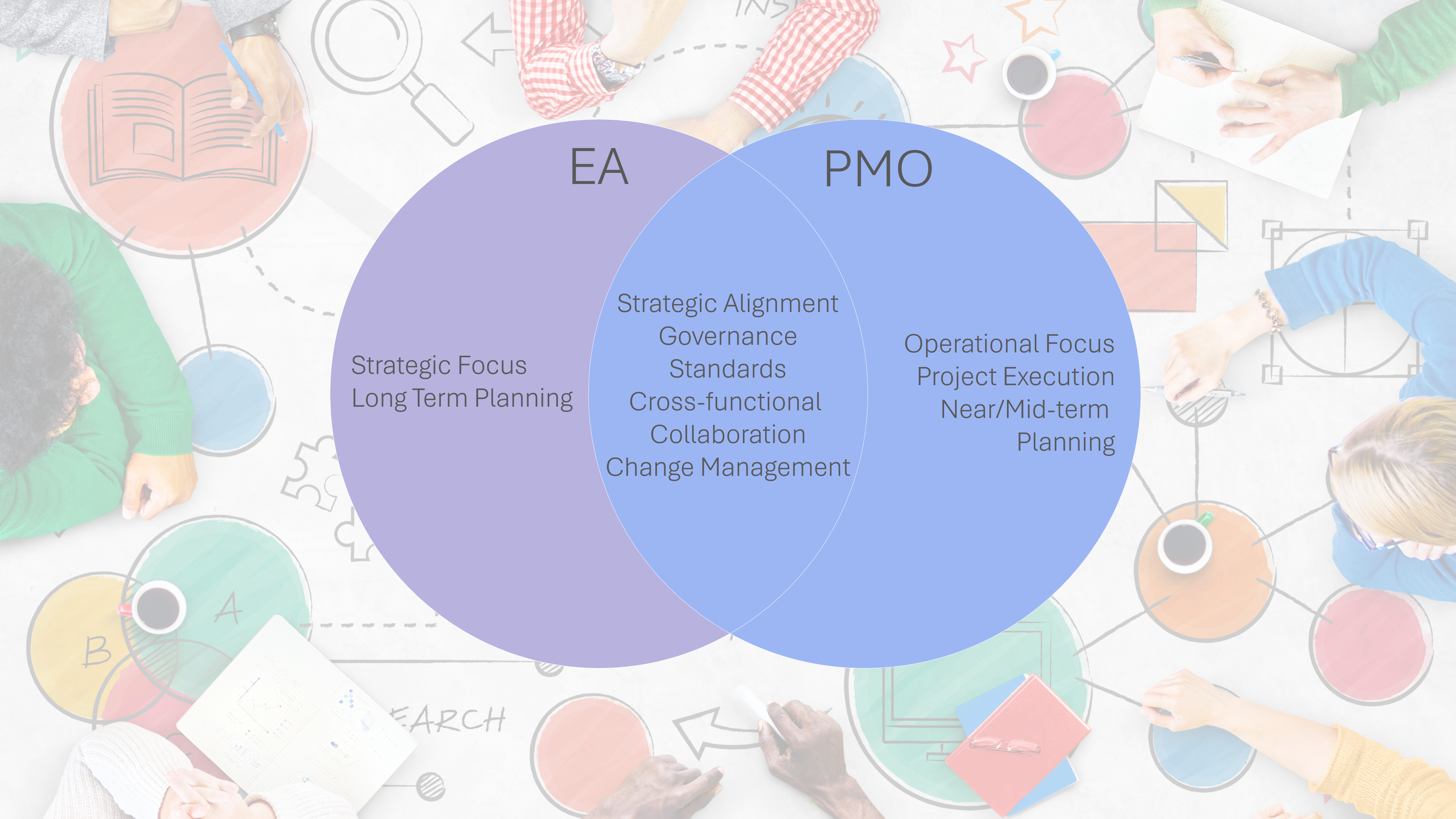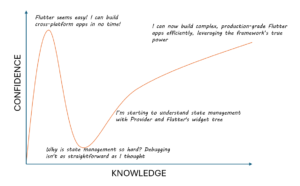I have had the opportunity to perform two key IT Planning roles for different organizations: Enterprise Architect and Head of PMO. From this experience, I have observed that there are quite a few similarities between the two disciplines, especially in terms of strategic alignment and governance. However, each role has its own unique strategic components that drive different aspects of an organization’s success. While both roles are crucial in ensuring that strategic objectives are met, the way they influence and steer the organization is where the key differences lie.
Understanding Enterprise Architecture (EA)
Enterprise Architecture is a comprehensive framework used to manage and align an organization’s IT assets, people, operations, and projects with its overall business strategy. EA provides a holistic view of an organization’s processes, information systems, technologies, and goals, ensuring that all aspects work in harmony to achieve strategic objectives. It focuses on long-term planning and the creation of a blueprint that guides the evolution of the organization’s infrastructure and operations.
Understanding Project Management Office (PMO)
The Project Management Office, on the other hand, is a centralized unit within an organization that standardizes project management processes and facilitates the successful execution of projects. The PMO ensures that projects align with business goals, are completed on time, within scope, and within budget. It provides governance, best practices, tools, and resources to project managers and teams, overseeing project portfolios to ensure alignment with the organization’s strategic objectives.
Similarities Between EA and PMO
Strategic Alignment: Both EA and PMO are critical in aligning projects and operations with the organization’s strategic goals. EA does this by providing a blueprint for the enterprise’s evolution, while the PMO ensures that individual projects and programs adhere to this blueprint.
Governance and Standards: Both functions establish governance structures to ensure that activities are performed according to defined standards and best practices. EA focuses on architectural standards and the integration of technology and processes, whereas the PMO concentrates on project management methodologies and compliance.
Cross-functional Collaboration: EA and PMO both require collaboration across various departments and functions within the organization. EA relies on input from multiple stakeholders to create an accurate enterprise blueprint, while the PMO collaborates with different business units to ensure that projects meet organizational needs.
Change Management: Both EA and PMO are involved in managing change within the organization. EA guides the transformation of business and IT landscapes, while the PMO manages the changes brought about by individual projects, ensuring smooth implementation and adoption.
Differences Between EA and PMO
Scope of Work: The scope of EA is broader and more strategic, encompassing the entire enterprise, including its processes, systems, and technologies. EA focuses on long-term planning and architectural development. In contrast, the PMO is more operational, focusing on the execution and delivery of specific projects and programs within a defined time frame.
Focus on Time Horizon: EA is concerned with the long-term evolution and sustainability of the enterprise architecture, considering future trends and technologies. The PMO, however, is more focused on the near to mid-term, ensuring that projects are completed successfully within the current planning cycle.
Role in Decision-Making: EA often plays a role in high-level strategic decision-making, advising on the alignment of IT and business strategies and the impact of architectural decisions on the organization’s future. The PMO is more involved in tactical decision-making, dealing with the execution of projects, resource allocation, and project prioritization.
Tools and Methodologies: EA and PMO use different tools and methodologies. EA typically utilizes frameworks like TOGAF (The Open Group Architecture Framework) or Zachman to design and implement enterprise architectures. The PMO, meanwhile, uses project management methodologies such as PMI’s PMBOK (Project Management Body of Knowledge) or Agile frameworks to manage projects.
Outcome Focus: The outcome of EA is a well-architected enterprise that can adapt to changing business environments and leverage new opportunities. The PMO’s outcome is the successful completion of projects that deliver specific benefits to the organization, contributing to the strategic goals defined by the EA.
The Intersection of EA and PMO
The intersection of EA and PMO lies in their mutual goal of ensuring that business strategies are effectively translated into operational execution. EA provides the strategic framework and architecture that guide project selection, prioritization, and alignment. The PMO operationalizes this strategy by executing projects within the parameters set by the EA, ensuring that all initiatives contribute to the broader organizational goals.
In organizations where EA and PMO are well-integrated, there is a seamless flow of information and alignment between strategy and execution. EA informs the PMO of the long-term vision and architectural guidelines, while the PMO provides feedback on project outcomes and operational challenges, allowing the EA to refine and adjust its strategies.
Conclusion
Enterprise Architecture and the Project Management Office, though distinct in their roles and focus areas, are complementary functions within an organization. By understanding the overlap and differences between EA and PMO, organizations can ensure that they leverage both to drive efficiency, strategic alignment, and successful execution of business goals. Together, EA and PMO create a cohesive environment where strategy and execution are tightly aligned, enabling organizations to navigate the complexities of modern business with agility and foresight.




